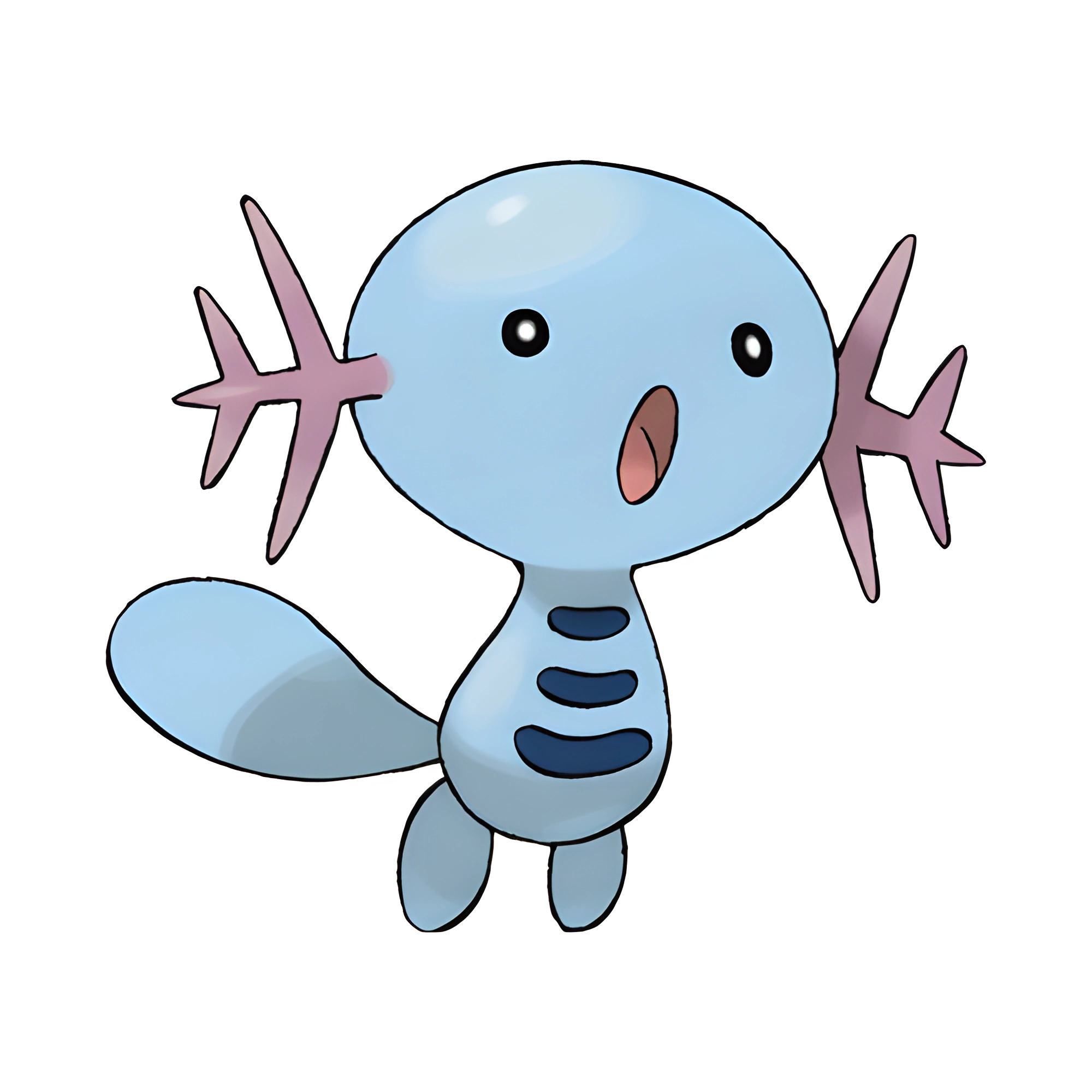Facts for Kids
Wooper is a playful Water/Ground-type Pokémon known for its distinct blue body and pink gills, thriving in watery environments.
Overview
Diet And Feeding
Interesting Facts
Conservation Status
Cultural Significance
Behavior And Lifestyle
Habitat And Distribution
Physical Characteristics
Reproduction And Life Cycle

Inside this Article
Community
Pollution
Wetlands
Swimming
Quagsire
Pokémon
Light
Skin
Food
Did you know?
🌊 Wooper is a Water/Ground-type Pokémon introduced in Generation II.
🐾 Wooper's body is mostly blue, with a light blue underbelly and pink antennae.
🌿 Wooper can be found in swamps and muddy areas, enjoying a life in water.
🎶 It communicates by using its gills to produce sound waves, which can also be used to detect nearby objects.
💧 Wooper absorbs moisture through its body and is often seen taking in water.
🦠 It is known for its ability to regenerate and heal quickly from injuries.
🍃 Wooper evolves into Quagsire starting at level 20.
🔊 Wooper has a special ability called 'Damp,' which prevents self-destructing moves.
🏅 It is known as the 'Water Fish' Pokémon in the Pokédex.
😄 Wooper's playful nature often leads it to get into trouble with other Pokémon.
Introduction
It was first discovered in the Johto region (which is featured in Pokémon Gold and Silver) and is known for its friendly nature. Wooper is often found near water, splashing about and having fun! When it evolves, it becomes Quagsire, a bigger Pokémon with even more abilities! Wooper loves to swim and is super playful, making it a beloved Pokémon among trainers and fans alike. 💙
Diet And Feeding
It uses its gills to breathe while swimming in the water. Wooper might also eat algae, which gives it the energy to play and explore! It’s important for Wooper to have a good diet because it needs enough nutrients to grow and become Quagsire when it evolves. If you take care of your Wooper, it will grow strong and healthy! 🌱
Interesting Facts
It’s true! This ability helps keep Wooper hydrated, especially when it’s out of the water! Wooper also has a special technique called "Water Gun", which lets it shoot water at opponents during battles. 💦
It's not just cute; it’s also a strong fighter! Wooper can be found in many Pokémon media, and some fans even draw pictures or create stories featuring their favorite blue buddy! Wooper is all about fun, friendship, and adventure! 🌟
Conservation Status
In playable Pokémon games, helping to protect Wooper's habitat is important for maintaining balance. By keeping waterways clean and free from pollution, players can support the health and safety of cute creatures like Wooper! 🌊
So, taking care of nature helps Wooper and all Pokémon live happily in their environments!
Cultural Significance
In various Pokémon games and shows, Wooper has been featured as an important mascot that represents joy and playfulness. Many trainers choose Wooper as their companion because of its friendly nature. There are also Wooper plush toys and merchandise, making it popular among fans. Wooper brings smiles and happiness and encourages everyone to have fun while playing Pokémon! 🎉
Behavior And Lifestyle
It loves to splash around in the water and enjoy sunny days. Wooper often plays with other Wooper and Pool Pokémon. They’re known to wiggle and dance when they're happy! Wooper also likes to explore its environment, but it can be a bit shy around new creatures. This little Pokémon is often seen sleeping peacefully in muddy areas, keeping its skin moist and cozy! 💤
Wooper is friendly to trainers and enjoys being caught to join Pokémon battles.
Habitat And Distribution
It is usually found in regions that have lots of water. In the Pokémon world, you can find Wooper mostly in the Johto and Hoenn regions. These areas have many lakes and rivers ideal for Wooper's lifestyle. They even enjoy rainy days when water collects on the ground! 🌧
️ Wooper's habitat is essential for it to thrive, as it needs water to stay healthy and happy.
Physical Characteristics
It has a round body with a soft, light blue color. Wooper has two little fins on its arms and a longer tail, which helps it swim. One of the coolest things about Wooper is its gills, which look like little pink branches on its head! Wooper also has a big, happy smile and round eyes, giving it a friendly appearance. Its unique look makes it easily recognizable as a favorite Pokémon!
Reproduction And Life Cycle
Wooper reproduces by laying eggs in water during warm months. These eggs eventually hatch into adorable Wooper babies! The baby Wooper are tiny and start learning to swim right after hatching. It’s important for them to find food and grow strong so they can eventually evolve into Quagsire too. Life is all about having fun and growing up as a happy Wooper!

